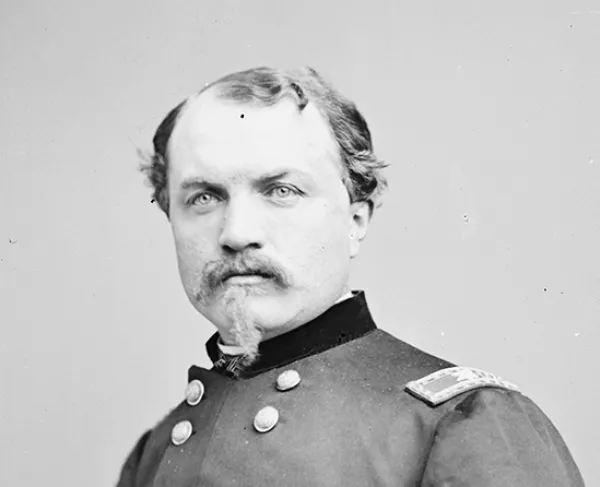
Moorefield
Hardy, WV | Aug 7, 1864
On July 30, 1864, a Confederate cavalry force of about 3,000 under Brig. Gen. John McCausland and Brig. Gen. Bradley T. Johnson invaded Chambersburg, Pennsylvania. After demanding a ransom of $500,000 in greenbacks or $100,000 in gold, which the town could not procure, Confederates set fire to a large portion of the town in retaliation for Union raids in the Shenandoah Valley. In pursuit were about 1,700 cavalry soldiers under Union Brig. Gen. William A. Averell. On the night of August 6, McCausland and Johnson camped their men at Old Fields, three miles north of Moorefield. McCausland’s brigade camped on the south side of the South Branch of the Potomac River, while Johnson’s men slept on the north side. This location was chosen primarily because it offered ample space for their horses to graze, rather than being a defensible position. McCausland and Johnson ignored warnings from McNeill’s Rangers, a group of local Confederate partisans, that their position was exposed. They both assumed Averell’s force was 60 miles away in Hancock, Maryland. But Averell was still in pursuit.
That night, Averell cautiously approached the camps, using an advance guard disguised as Confederate soldiers, and quietly capturing any Confederate pickets between them and the camp. The next morning, August 7, one of Averell’s brigades attacked Johnson’s sleeping men on the north side of the river. Confused Confederates, without their horses saddled, tried to flee and left behind many supplies, many taken from Chambersburg. On the south side, some Confederates tried to resist the assault, but it proved ultimately futile. Around 400 Confederates were killed or captured, along with about 400 captured horses.
This loss irreparably damaged Confederate cavalry in the Shenandoah Valley. Later, Confederate Gen. Jubal Early wrote that the debacle at Moorefield had a “very damaging effect” on the effectiveness and morale of his horse soldiers. Almost immediately after Averell’s victory, Union Gen. Philip Sheridan was unleashed into the Shenandoah Valley and would repeatedly defeat what was left of Confederate cavalry, driving them from the valley. These victories, along with the fall of Atlanta, would help ensure President Abraham Lincoln’s re-election in November.
All battles of the Early's Maryland Campaign
Related Battles
1,760
3,000
42
488










